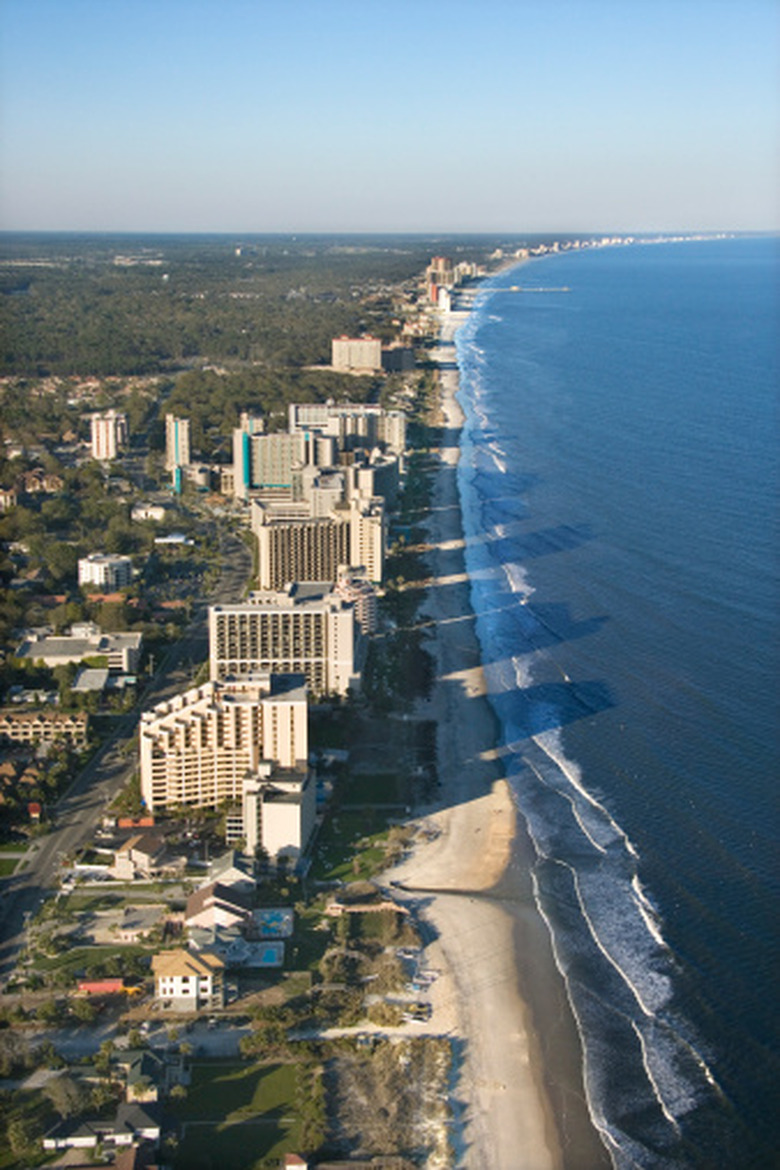When To Lay Sod In Coastal South Carolina
The coastal plain of South Carolina includes the lowest elevations, extending from the Atlantic Ocean inland, roughly to a line from North Augusta to Florence. In the counties on the coast, the soils are sandy and the winters are warmest, likely never colder than 15 degrees Fahrenheit. This, along with long, hot and humid summers, makes warm-season grasses the best choice for lawns. Warm-season lawns become dormant or nearly so from late November to late March.
Grass Types
The lawns grown in coastal South Carolina include Bermudagrass, centipedegrass, zoysia, or Charleston grass, also known as St. Augustinegrass. Charleston grass and Bermudagrass are most tolerant of ocean salt spray. It's most common to establish these grasses as sod or small sprigs. However, common (nonhybrid) Bermudagrass, centipedegrass and zoysia can all be started from seed, which is less expensive but often more time-consuming and labor-intensive.
- The coastal plain of South Carolina includes the lowest elevations, extending from the Atlantic Ocean inland, roughly to a line from North Augusta to Florence.
- However, common (nonhybrid) Bermudagrass, centipedegrass and zoysia can all be started from seed, which is less expensive but often more time-consuming and labor-intensive.
Sodding Season
Healthy, dense strips of warm-season grass sod can be laid anytime of year, but is best done in South Carolina when the temperatures remain above 55 degrees Fahrenheit for several weeks. April through September are the best months for laying new sod. Sodding during the warm months of the year hastens establishment, as that's when warm-season grass roots and leaves actively and most quickly grow. Proper watering is needed to ensure the roots grow well and plants do not dry out during the hot days.
Watering Care
Always lay sod atop soil that is already moist. Once the sod is placed, especially during warm and/or windy weather, the top 3 to 4 inches of soil under the sod must remain evenly moist. This ensures the roots do not dry out or die. The moist soil profile encourages timely downward penetration of the sod roots. Water the new sod lawn lightly during the midday hours to maintain a moist soil to at least a 3-inch depth. After about three to four weeks, the roots should be in the soil so that sod pieces cannot be pulled up. Reduce irrigation at this time so that 1/2 to 1 inch of water, including rainfall, maintains the lawn the rest of summer until October.
- Healthy, dense strips of warm-season grass sod can be laid anytime of year, but is best done in South Carolina when the temperatures remain above 55 degrees Fahrenheit for several weeks.
- After about three to four weeks, the roots should be in the soil so that sod pieces cannot be pulled up.
Other Insight
Do not fertilizer newly planted warm-season grasses until after it is well-rooted into the soil and it is green. The first fertilization should be half the normal dosage. For example, rather than applying the usual 1 pound of nitrogen per 1,000 square feet, make it 1/2 pound for that same area. Mow the new lawn only after the roots are knitted downward into the soil and the lawn is green and at least 2 inches tall. Do not cut more than one-third of the total height of the grass at each mowing. Otherwise you stress the grass plants and potentially cause a higher need for irrigation or make the lawn more susceptible to diseases or weed infestation.
References
- Clemson Cooperative Extension; Lawn Establishment; Bob Polomski, et al.; 1999
- "Month-by-Month Gardening in the Carolinas"; Bob Polomski; 2000
